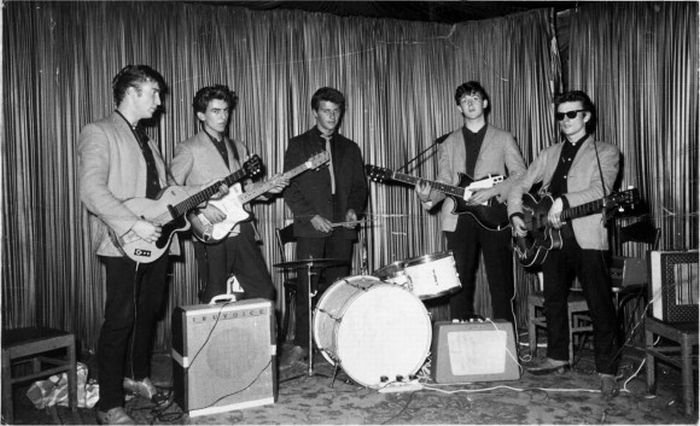|
|
History: Early Years Of The Beatles
|
- Abbey Road, Let It Be and break-up
Although Let It Be was The Beatles' final album release, most of it was recorded before Abbey Road. Initially titled Get Back, Let It Be originated from an idea Martin attributes to McCartney: to prepare new material and "perform it before a live audience for the very first time—on record and on film. In other words make a live album of new material, which no one had ever done before." In the event, much of the album's content came from studio work, many hours of which were captured on film by director Michael Lindsay-Hogg. Martin said that rehearsals and recording for the project, which occupied much of January 1969, were "not at all a happy ... experience. It was a time when relations between The Beatles were at their lowest ebb." Aggravated by both McCartney and Lennon, Harrison walked out for a week. He returned with keyboardist Billy Preston, who participated in the last ten days of sessions and was credited on the "Get Back" single—the only other musician to receive such acknowledgment on an official Beatles recording. The band members had reached an impasse on a concert location, rejecting among several concepts a boat at sea, the Tunisian desert and the Colosseum. Ultimately, their final live performance, accompanied by Preston, was filmed on the rooftop of the Apple Corps building at 3 Savile Row, London, on 30 January 1969.
Engineer Glyn Johns worked for months assembling various iterations of a Get Back album, while the band turned to other concerns. Conflict arose regarding the appointment of a financial adviser, the need for which had become evident without Epstein to manage business affairs. Lennon, Harrison and Starr favoured Allen Klein, who had negotiated contracts for The Rolling Stones and other UK bands during the British Invasion. McCartney wanted John Eastman, brother of Linda Eastman, whom McCartney married on 12 March (eight days before Lennon and Ono wed). Agreement could not be reached, so both were appointed, but further conflict ensued and financial opportunities were lost.
Martin was surprised when McCartney contacted him and asked him to produce another album, as the Get Back sessions had been "a miserable experience" and he had "thought it was the end of the road for all of us ... they were becoming unpleasant people—to themselves as well as to other people." Recording sessions for Abbey Road began in late February. Lennon rejected Martin's proposed format of a "continuously moving piece of music", and wanted his own and McCartney's songs to occupy separate sides of the album. The eventual format, with individually composed songs on the first side and the second largely comprising a medley, was McCartney's suggested compromise. On 4 July, while work on the album was in progress, the first solo single by a Beatles member was released: Lennon's "Give Peace a Chance", credited to the Plastic Ono Band. The completion of the Abbey Road track "I Want You (She's So Heavy)" on 20 August 1969 was the last time all four Beatles were together in the same studio. Lennon announced his departure to the rest of the group on 20 September, but agreed that no public announcement would be made until various legal matters were resolved.
|
|









